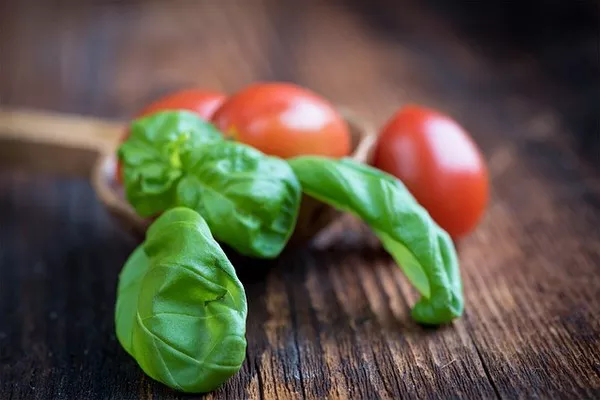Self-pollination, the often-overlooked process in the realm of plant reproduction, holds tremendous potential for both gardeners and botanists alike. While many may be familiar with the concept of pollination, understanding the intricacies and benefits of self-pollination can elevate one’s gardening prowess to new heights. In this comprehensive guide, we delve into the world of self-pollination, exploring its definition, advantages, and techniques to master this art.
What is Self-Pollination?
At its core, self-pollination is a reproductive mechanism in plants wherein pollen from the male reproductive organs (anthers) of a flower fertilizes the female reproductive organs (stigma) of the same flower or another flower on the same plant. Unlike cross-pollination, which involves the transfer of pollen between flowers of different plants, self-pollination occurs within a single plant.
The primary distinction between self-pollination and cross-pollination lies in the source of pollen. In self-pollination, the pollen originates from the same plant, promoting genetic uniformity within the offspring. Conversely, cross-pollination facilitates genetic diversity by combining genetic material from different plants.
Benefits and Drawbacks of Self-Pollination
Self-pollination offers several advantages, notably in environments where pollinators may be scarce or inconsistent. By relying on their own resources for pollination, self-pollinating plants ensure reproductive success even in isolation. Additionally, self-pollination can accelerate the breeding process in controlled environments, enabling rapid generation turnover and trait selection.
However, the inherent lack of genetic diversity in self-pollinating species poses a significant drawback. Limited genetic variation diminishes the plant’s ability to adapt to changing environmental conditions and increases susceptibility to diseases and pests. Moreover, continuous self-pollination can lead to inbreeding depression, characterized by reduced vigor and fertility in offspring.
Flowers Suitable for Self-Pollination
Numerous plant species exhibit self-pollination, each with unique characteristics and adaptations. Some common examples include tomatoes (Solanum lycopersicum), peas (Pisum sativum), beans (Phaseolus vulgaris), and peppers (Capsicum annuum). These plants often possess structural features that facilitate self-pollination, such as perfect flowers containing both male and female reproductive organs or physical barriers that prevent cross-pollination.
Methods of Self-Pollination
Mastering the art of self-pollination requires a combination of precision, timing, and technique. Below, we explore three primary methods employed by gardeners and botanists to achieve successful self-pollination.
1. Hand Pollination
Hand pollination involves manually transferring pollen from the anthers to the stigma of a flower. This method is particularly effective for plants with intricate flower structures or limited access to natural pollinators. Follow these steps for successful hand pollination:
Step 1: Identify flowers ready for pollination. Look for flowers with fully developed anthers and receptive stigmas.
Step 2: Gently pluck a mature anther from the flower using tweezers or your fingers.
Step 3: Carefully brush the collected pollen onto the stigma of the same flower or another flower on the same plant.
Step 4: Repeat the process for multiple flowers to ensure thorough pollination.
2. Using Tools
For plants with tightly clustered flowers or inaccessible reproductive organs, employing tools can streamline the pollination process. Tools such as brushes or electric toothbrushes provide a controlled and efficient means of transferring pollen. Here’s how to use tools for self-pollination:
Step 1: Select a clean, soft-bristled brush or electric toothbrush.
Step 2: Gently tap or brush the anthers to dislodge pollen onto the brush.
Step 3: Carefully apply the collected pollen to the stigma of the same flower or another flower on the same plant.
Step 4: Clean the brush between pollinations to prevent cross-contamination.
3. Isolation Techniques
Preventing cross-pollination is essential for maintaining genetic purity in self-pollinating species. Isolation techniques, such as covering flowers with mesh bags or hand-pollinating before flowers fully open, can safeguard against unwanted pollen transfer. Follow these steps to isolate flowers for self-pollination:
Step 1: Identify flowers at risk of cross-pollination.
Step 2: Cover the flowers with mesh bags or fine netting to prevent access by pollinators.
Step 3: Hand-pollinate the covered flowers before they fully open to ensure successful self-pollination.
Step 4: Monitor covered flowers for signs of successful pollination and remove mesh bags once fertilization occurs.
Tips for Success
Achieving optimal results in self-pollination requires attention to detail and careful execution. Consider the following tips to enhance your self-pollination endeavors:
Timing is crucial: Pollinate flowers during their peak receptivity, typically in the morning when pollen production is highest.
Identify male and female parts: Familiarize yourself with flower anatomy to accurately target reproductive organs during pollination.
Maintain hygiene: Keep tools and hands clean to prevent contamination and ensure the purity of pollinated flowers.
Monitor closely: Regularly inspect pollinated flowers for signs of successful fertilization, such as fruit development or seed formation.
Conclusion
In conclusion, self-pollination serves as a valuable tool for gardeners, botanists, and agriculturalists seeking to optimize plant fertility and productivity. By understanding the principles of self-pollination and employing effective techniques, individuals can harness the potential of this natural process to cultivate thriving gardens and resilient crops.


